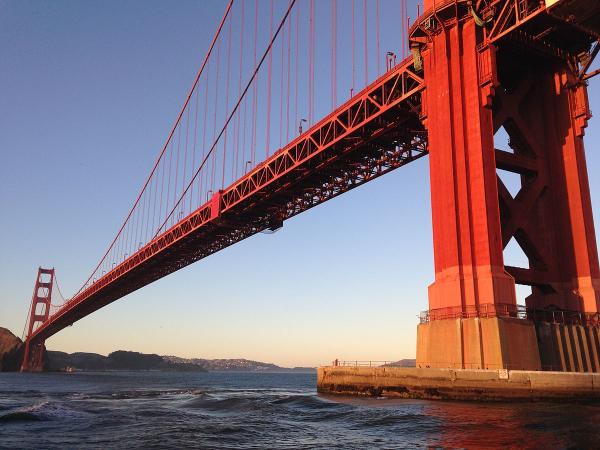In a nutshell this is why all the perfect modeling in anechoic chambers sometimes fails to translate into perfect sound at home. Exciting resonances can be a huge fail. I think this is why many folks appreciate near-field point source listening.
The Case of the Singing Bridge

My first house, it turned out, was not possessed. At least not by ghosts. Instead, it was being frequented by squirrels in the attic. I gently shooed them away, and plugged a hole. Case closed.
My current house involved a little more sleuthing. It turned out that railings on the balcony had been adorned with stainless steel wire cables tightly stretched between the posts. When a strong wind hit them just right, they resonated, and begin to howl. Mitigation was simple: removing the steel cables on the exposed and predominantly windward side of the house. Case closed.
The Case of the Singing Bridge involves one of the most iconic bridges in the world, the Golden Gate Bridge in San Francisco Bay. The problem, like so many problems, stems from an improvement. To help protect the bridge against high wind force, it was decided that better airflow through the structure was needed. So, the thick metal slats of the west handrail were replaced by thinner railing slats, chosen because of their lowered wind resistance. And that has created a very audible problem. When a strong wind hits the handrail, it really sings. There are a plethora of videos on this. Here is a local news report. And here's another video with a good audition of the singing.
The reaction of local officials was – um, predictable. According to the news report, they say the singing was “expected” and is not a bug; rather, it is a “feature.” It is certainly a very public feature. With a strong wind, San Francisco residents reported they could hear the sound inside their homes, miles away from the bridge. Some people found the sound to be trippy, or even pleasantly meditative. Other residents, the ones covering their ears, not so much. That was when the railing modification was about 75% complete; no word on the “expected” loudness level upon full completion. According to a Bridge District spokesperson, the new design is necessary to keep the bridge safe and no mitigation is planned. Like it or not, case closed.
Thus the sound of the singing bridge will likely to be a permanent albeit infrequent occurrence in San Francisco. Yes, the howling might be weirdly soothing for some people; perhaps on windy days, it will be a tourist attraction. Personally, maybe because I am abnormally bothered by distracting noises, I think it would be pretty annoying. On the other hand, maybe it will keep the squirrels away.
- Log in or register to post comments


I’ve played on a few online casinos in Switzerland, but not all of them were fair. Some had slow payouts, while others had impossible bonus conditions. That’s why I started using https://gamblecritic.org/swiss-online-casinos/ . Their detailed reviews helped me find trustworthy casinos with fair terms. Plus, their bonus section made it easy to find promotions that actually give me value. Now, I always check their site before signing up anywhere new.






























































